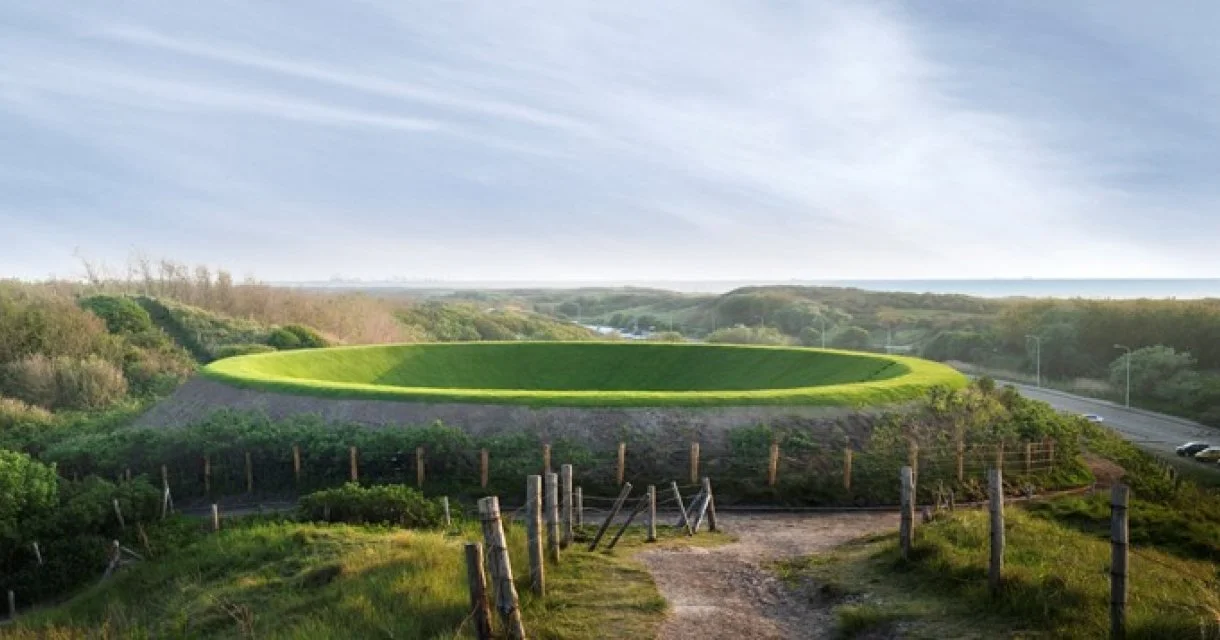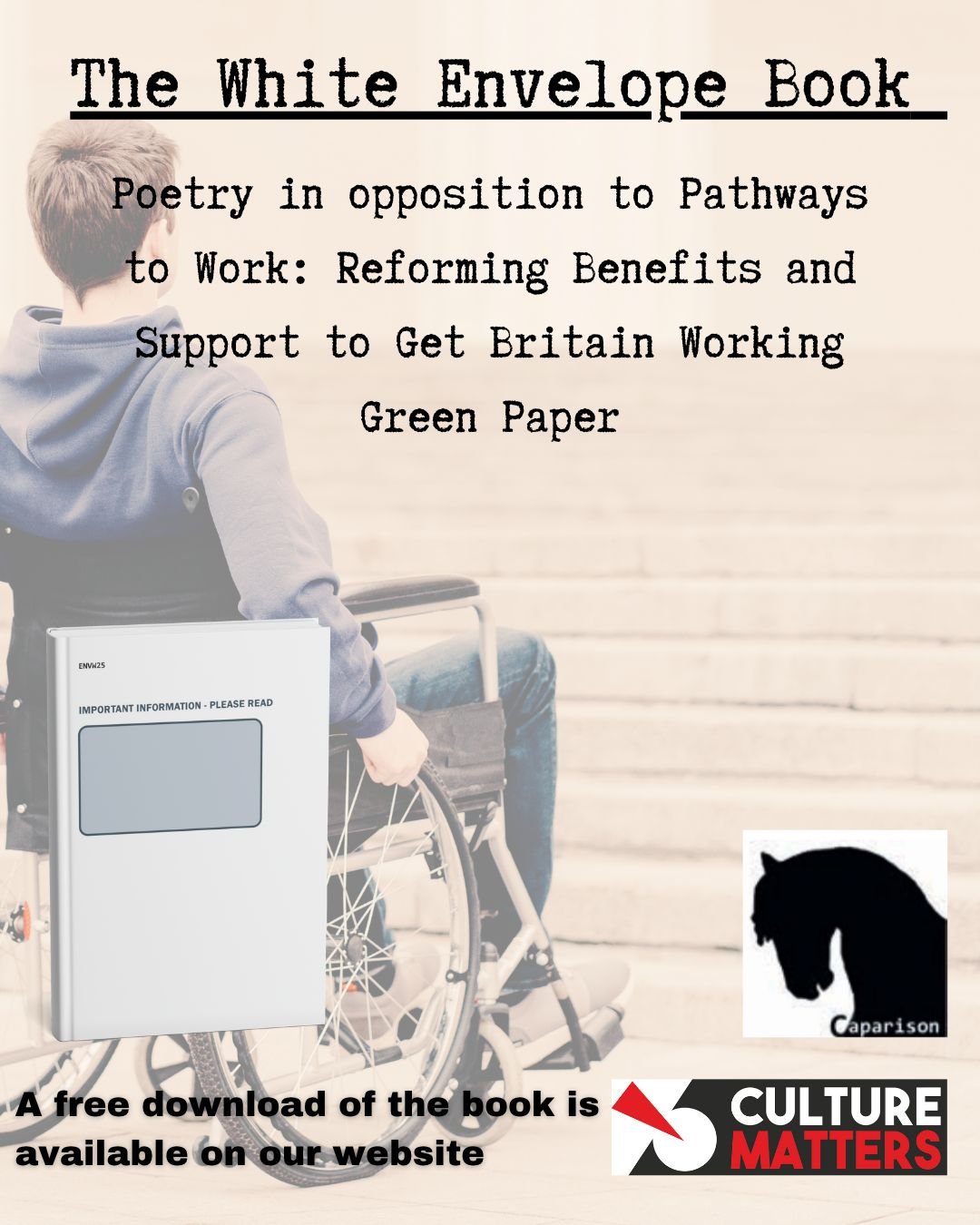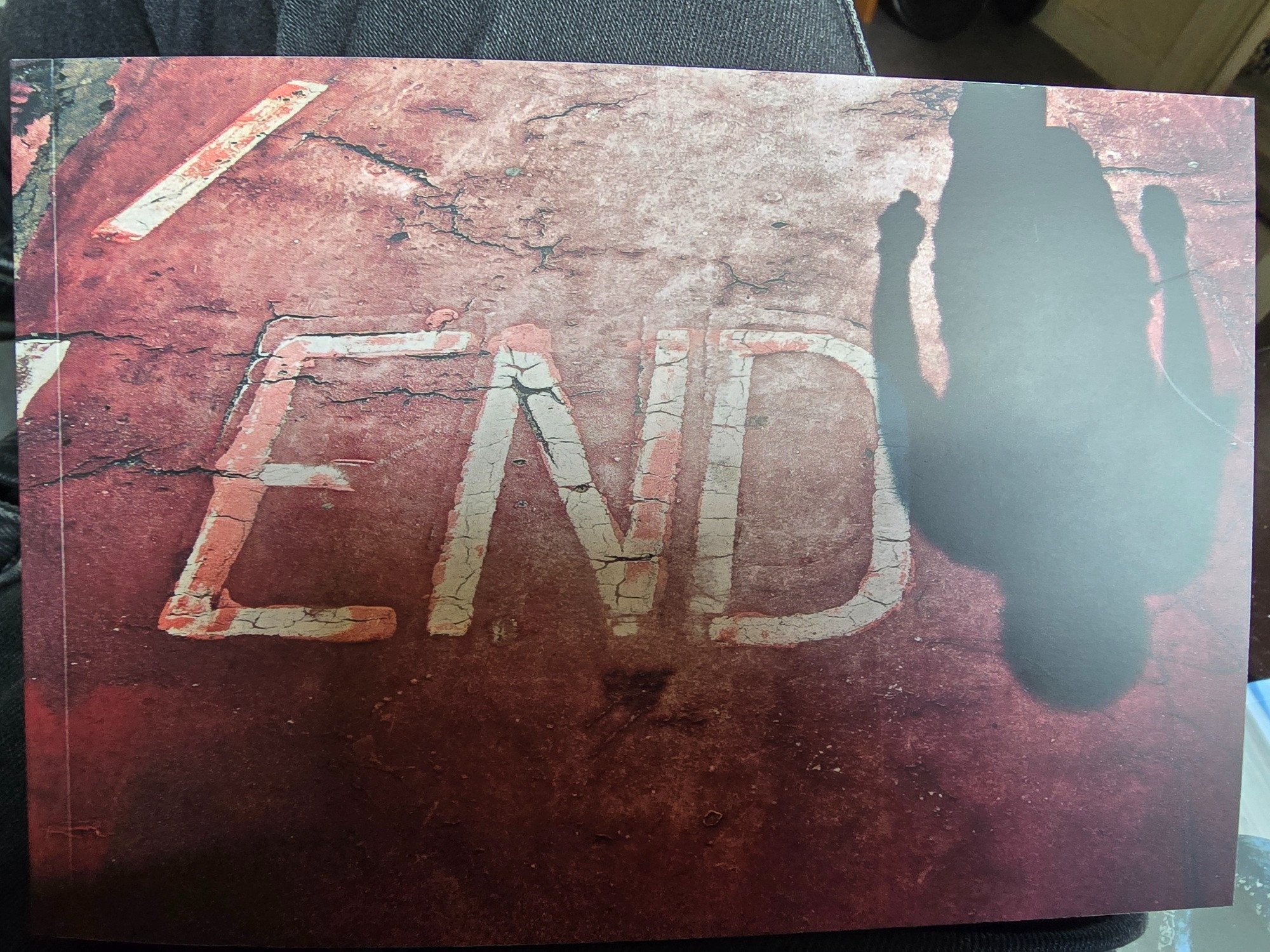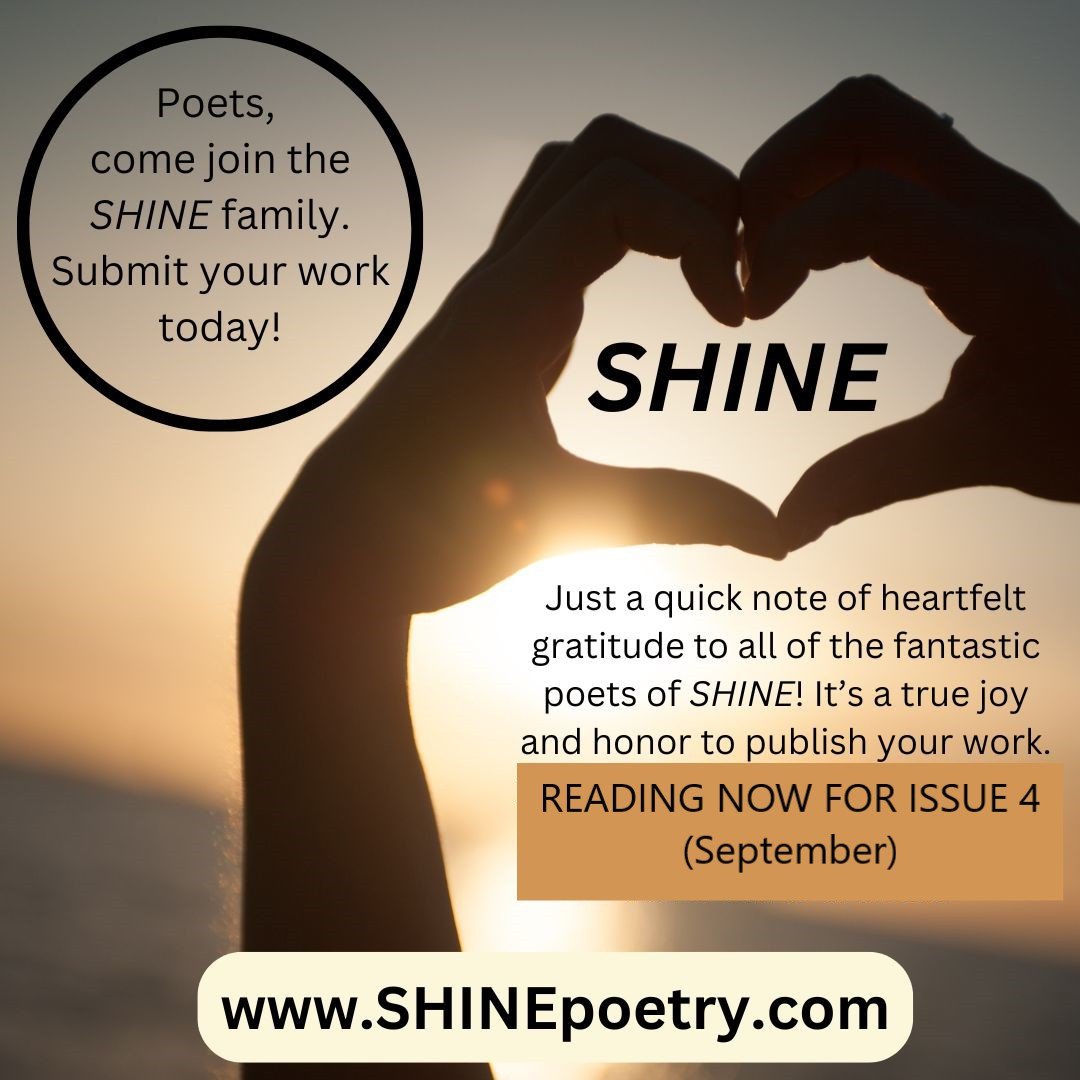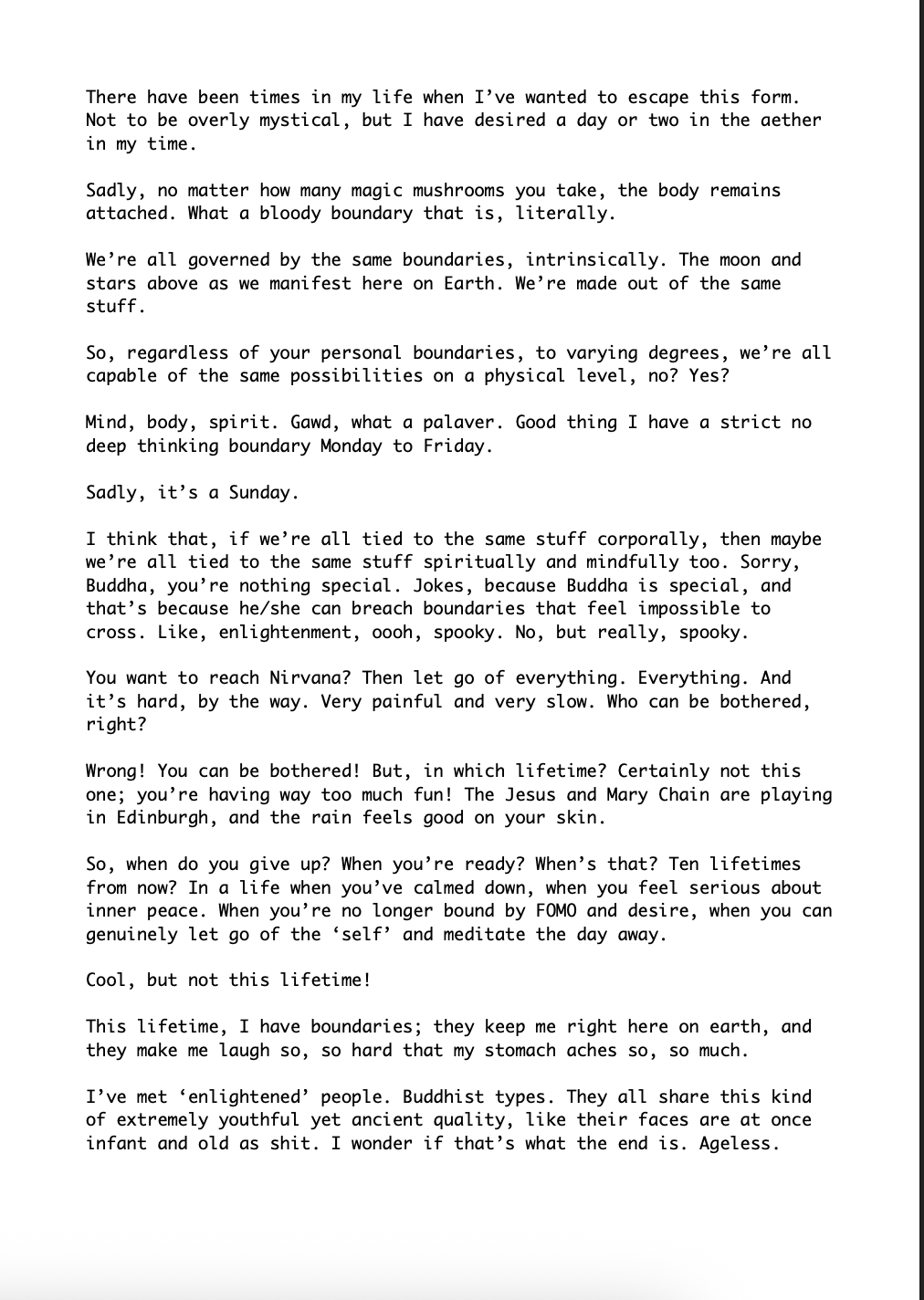BOUNDARIES can take many forms.
They state where one thing ends and another begins. They act as separators and define a border.
They can be implicit or clearly defined. They can be legal, part of a code of conduct, expected, geographical, emotional, conceptual and political.
They can change over time and evolve.
Sara Ahmed writes in "Strange Encounters" about the many types of borders, which include skin, neighbourhoods, culture, fear, and belief systems.
There are some borders we can control and others we cannot.
For this open call, we sought art and writing that explored how we can push against borders in all their forms.
Pushing the boundaries of the exhibition
by resident art writer Michaela Hall
When most people think of a piece of art, they think of the gallery space - that is the space where art usually 'should' be shown. If most people also think of 'outdoor' pieces of art, they think of the types of commemorative sculptures we see across our cities marking the history of a place or smaller static modern art sculptures that don't occupy as much space. This has been gradually changing over the last few decades because artists are continuing to experiment and push the boundaries of where an artwork 'should' be exhibited - coming out the traditional gallery space to a public setting in a way that isn't passive or subtle but gloriously proud and present.
Coined the 'master of light', American artist James Turrell approaches his projects playing with ideas of space, light, setting and dimension which in turn results in large-scale installations and sculptures that personify pushing the boundaries of where an artwork belongs. 'Celestial Vault' (1996) in the landscape of dunes in The Hauge is a striking example of this whereby the artist chose a place that was perfect for looking at the sky and created a sculptural work that audiences can actually use to do this. The work looks like a surreal crater we might see in a sci-fi movie, it's 30 metres wide and 40 metres long and adds to the environment in a way that a passer-by may wonder if this is an unusual architectural bit of the landscape or an artwork - it pushes the boundaries of sculpture, installation and also creates a completely unique exhibition space for itself.
(image courtesy of: https://denhaag.com/en/james-turrell-celestial-vault)
Another pioneer of this is notorious 'Young British Artist' Damien Hirst, who throughout his career has continued to play with the sensational, the giant, and the controversial. His works are often confrontational and bold and demand out attention in a wonderfully powerful way. Not an artist shy of exhibiting his massive sculptural works in public settings, Hirst took it to new levels in 2020 and was the first artist to exhibit on the frozen lake of St Moritz in Switzerland. If there's ever a way to push the boundaries of the gallery space, this is it. 'Monk' (2014) was placed right in the centre of the lake and at 12 feet high - completely alters the landscape of snowy mountains around it - creating a new way of looking at the place and why this might have been placed here - it gives the place new story and wonder.
(Image courtesy of: Felix Freeman © Damien Hirst and Science Ltd, All Rights Reserved, Dacs 2020)
These artists demonstrate that where onceover art was reserved for the classic gallery or white cube, things have and continue to change - taking artwork and exhibitions to new heights (quite literally!) The boundaries of where an artwork lives are constantly being stretched and challenged and creating a culture where the gallery space is infinite.
Our resident Poet - Peter Devonald
Peter Devonald
Beyond The Bridge**
Angels turn inwards,
wings implode with crossed arms and broken hearts,
deep thoughts and deeper sighs,
what has the world become?
What has the world become?
Dark desires fly whilst goodness drops to knees,
shredded with hopeless dreams,
torso feels like concrete despair,
cement fuelled lungs writhe with misery,
aching longing limbs
exhausted by it all:
“How long can you fight,”
the sirens sing,
“sleep the sleep that new horizons bring.”
Aeolian winds blow harsh tonight,
moaning and sighing sounds
eroding and demanding,
weakens even soundest hearts.
“The weary world won't miss you
sleep, sleep, eternal sleep.”
Torrential rain gutters flood,
see the universe in your reflection
in the window of wind and storm,
look beyond and see the trees,
statuesque and all-knowing,
blowing against the winds of time,
“Survive, survive, survive,”
the mantra to it all.
All our strength wistfully sings new harmonies:
grow trees for tomorrow you won't see,
lay roots for other people's children,
focus on a fervid future
you will not be a part of,
fashion dreams for others in the shadows,
look forward not back.
Build roots for others longing life,
maybe they might take the paths you failed to travel,
be the person you could have been ---
shield and protect them, try and try again,
even as the eternal footman shuffles,
still time to create, construct and hope,
initiate the world you wish you'd lived.
** first published in The Unconventional Courier
++++++++++++++++++++++++++++++++++++++++++++
Peter Devonald
The Kiss
The magic, music and genius
of countless brilliant people,
the boundless future aspirations
of every generation to do better,
push boundaries,
make connections
to our dreams.
++++++++++++++++++++++++++++++++++++++++++++
Peter Devonald
Angels Flying Inwards
withered wings clipped and frayed
still flourish
with last rays of day
precarious fragile lives
under hardened skies
the lies, the lies
spew from our beautiful lips
question marks of desire
sunsets sweep across sorry lands
severed wings tell no lies
silent as twilight
twisted delights
soft winds over cemeteries blow
whispering of dreams and snow
histories and loves we know
the gates creak weary slanders
gossip lasts even after death
shadows lengthen and darken
black cat slithers and slides
graves hold no meaning
feline sleek and svelte as ice
the living and the dead
murmuring muttering retreats
as memories linger
listen and breathe beating hearts
a shimmering and shining life
so clear and vivid
dancing amongst the gravestones
lovers hearts of fire and ice
still dance like Fred Astaire
lit by luminous full moons
imagining our time forever
whispering longing and memories
and you
always you
the radiant beginning and the shimmering end
* First published in The Suburban Witchcraft Magazine Issue 3 https://www.suburbanwitchcraft.com/issue3
Pushing Boundaries
As artists/ writers we push the boundaries all the time, test how far we can push things, how far we should push things, find the limits of our world --- both metaphorically and physically.
How much of our life can we include in our art without it becoming too personal, too indecent, stepping on the toes of loved ones? How far can we push our language till it breaks?
“The limits of my language mean
the limits of my world.”
Ludwig Wittgenstein (April 26, 1889–April 29, 1951)
I think of this quote often. Without words how can we find meaning? Lack of language creates barriers to our lives. I remember my English teacher at Cassio College saying, “if you swear all the time, where do you go when things really are bad? You lose all means of expression.” And I remember a good friend at university reading a page of the dictionary a day and memorising it – moving the limits of her world.
As a very definition of this, the original German phrase (“Die Grenzen meiner Sprache bedeuten die Grenzen meiner Welt”) can be translated in various ways which also change connotation. For instance: “The limits of my language stand for the limits of my world.” The devil is in the detail, the boundaries of our world can be defined by our knowledge of languages (or lack of!) as well as scope of language, an awareness of nuance and detail.
This month I found a different boundary to cross, how to write poetry on the trickiest subject, a government bill going through the House of Commons? The results can be found in a poem that appeared in The Morning Star weekend edition 28/29th June 2025 and four poems in The White Envelope Book – Poems in Opposition to the Pathways to Work Green Paper, edited by Alan Morrison, that’s just been published this week by Culture Matters.
Using poetry as a campaign tool is hardly new, and who knows what impact it can have, but very glad to say that through MP pressure significant changes were made including the deletion of the dreadful “4 points in PIP no support” clause.
Here follows a couple of other poems for your interest – so many boundaries to push and cross, so many boundaries to fear; we are defined by that which contains us.
Angels Flying Inwards (first published in Suburban Witchcraft Magazine Issue 3) and Beyond The Bridge (first published in The Unconventional Courier) both explore the journeys we all must one day make, recalling Hamlet: “To sleep, perchance to dream—ay, there's the rub / For in that sleep of death what dreams may come / When we have shuffled off this mortal coil, / Must give us pause. / There's the respect / That makes calamity of so long life.”
At the end we all reach our boundary, at the end of our world, there is always The Kiss.
Latest news and information now available at https://linktr.ee/pdevonald including publications in the wonderful Abridged 0-106 ‘Umbra Sumus’ edited by Gregory McCartney and Susanna Galbraith, Wildfire Words Ukraine Anthology 2025, SHINE edited by Samantha Terrell, 5-7-5 Haiku Journal. ed. DJ Tyrer and the sublime The Alchemy Spoon Issue 15. Also commended in the Waltham Forest Age UK Poetry Competition, artwork The Silver Mirror at the Stockport War Memorial Art Gallery - 22 June-22 August 2025 and absolutely delighted to have a mention in the latest Poetry Society News.
Artist name - Marie-Louise Plum
Artist's website/ instagram - www.marielouiseplum.com @marielouiseplum
My work explores harnessing space and place to push against physical and psychological boundaries. I write extensively about human beings adapting to their circumstances by leaning into themselves and/or the natural world and uncommon landscapes, and how they weaponise them within the confines of interpersonal relationships.
Place, Unbounded

The old joke - wheeled out at birthdays, Christmases, Easter, and pretty much any awkward situation that calls for levity - is that when I was born, I was placed directly into a cage.
It was on account of my size. A medical marvel, or monstrosity, I’m not sure which. The cage conclusion was arrived at to give my poor mother respite. God knows she needed it, or so the old joke goes.
I’m not sure whether this early experience psychically sculpted the shape of things to come, or if I now pay special attention to physical boundaries because of it. Since those tiny, squawking, formative years, my designated spaces of containment - again, intended to give respite to or save blushes of someone who is not me - have been many and varied.
One early Summer Saturday, under a just-made bed in East London I was ushered. The usherer had a pained and pleading look on his face, made even more strained by the doorbell that rang and rang. He couldn’t pretend he wasn’t in, he said. It really wouldn’t take long, he said. Under the bed I lay, flat, face to the floor, counting strand after strand of close-cropped carpet in that cheap rental flat, until I could count no more. The colour was blue-neutral, a bit clinic-like honestly. Conversations unfolded, about kids and football and if he was ever going back home again.
Falling Autumn, Northampton. Warm, dirty yellow streetlamp glow spilling under the tatty curtains. Carved-up house on a forgotten street. Flimsy plywood wardrobe with a wonky door, me inside it. I was bleeding but it wasn’t much, the trickle wouldn’t run to my chin, couldn’t dramatically drip to the floor of my secret hiding space. The rent was due. If the fact we couldn’t pay wasn’t bad enough, the state of my face would have prompted more worrisome enquiries. He spoke to the landlord as I held the wonky door in place, praying it wouldn’t slip.
A holiday home for a crystalline Winter, somewhere unpronounceable and wide-open beautiful, near Inverness. The bars of containment here were not physical, but psychological, the most impenetrable of all. To play happy families with two decks, separate as far as most of the characters knew, yet two of them were connected in forbidden ways. I watched it play out, smiles, laughs, jokes, stolen moments when no one else was looking. Carefree betrayal, my complicity taken, unbidden.
Escaping to the forest for hours and hours, tracing its ragged perimeter, I found the antlered skull of a mature roe deer. I cleaned it carefully. On the train back to London, my precious skull had its own seat.
Hope regenerated in an Italian Spring. The sea and sky kept me in place this time, and I wondered if, plucked from my British home, father left far behind, I would ever see him again. Adapting quickly to circumstances and situations beyond my control, this feeling didn’t so much sear violently like a missing limb, it was more of a raised eyebrows quizzical expression thing.
Trained responses to doggedly inquisitive young playmates revolved around my father simply not existing at all - as in, ever - and why would they think he did since I was most likely the result of immaculate conception? I did very well, my mother said, and for that I would be rewarded with gelato.
You’ll notice I mention the time of year, and a place. The seasons do not contain me, co-ordinates do not restrict me, these are my saving grace, the windows of freedom which I use to roam freely, mentally, during all boxed-in standstills.
Recollections of facts and figures occupy my mind, they help me travel while my physical body is grounded, kept hold of, pushed around, hidden away, bartered with, borrowed, caged. Just because my body is there, it doesn’t mean I am present.
I’m away. Dancing to the melody of space and place in my thoughts, dreams, and fantasies, taking snapshots to archive in my mental Rolodex of green fields, grey-blue skies, blue-black seas, opaline rivers. The stones under my feet and how they pressed cold against my skin. The sharp pricks of cut corn against my soft calves, the barbed wire that snagged my thigh when I thought I’d cleared it with a jump.
Cantering across undulating landscapes, through half-forgotten, semi-derelict edgelands, all these places, remembered, recorded by the turning of leaves, or shooting of buds, flooding of fields, and drying of chalk bed streams, marked by roadside ordnance survey symbols, parish beginnings and ends, outer limits and sea levels.
At the caged baby I laugh, the usherer, the tormentors, the fractured families, the playmates, the fathers, mothers; I push my captors’ boundaries silently, refuse to be present in the place they want me. I nod and smile, but I am absent. The thing they want most of all is my resistance, and, although they have it, they will never know it’s been given to them.
All these memory-places, unbounded, the space around the cage, outside of my body, are my escape. Instead of people, open skies and endless landscapes are my unfettering friends, and we speak in a language unrecognised by humans.
Artist name - Karl Pont
Artist's Instagram @pont.karl
Paolo is a quiet, haunting story about being lost between worlds. It explores loneliness, disconnection, and the invisible moments that change us. With sparse language and subtle tension, it gently breaks narrative norms. It pushes boundaries not loudly, but intimately, by asking what remains when certainty, time, and meaning dissolve.
Paolo
The world didn’t exist here. Just the cold light. And us. Paolo had arrived before me. Maybe he’d always been here. He sat in the chair on the left. When I came in, the one on the right was still empty. So I sat. He didn’t say a word. Quiet, distant, unreadable. Not exactly unfriendly, but closed off. The cold light was the only thing that felt fixed. It was everywhere, yet came from nowhere. It had no warmth, no flicker. Just there. Always. In front of us was something like a door. But it was locked. A wall of glass separated the room from whatever was beyond. You could see through it, but not pass. On the other side: motionless, silent, dark.
And beside us, a few flat, blank switches.
I pressed them. Nothing. Paolo didn’t react. He clutched his phone with both hands, gripping it like it meant something. Like it might save him. Or calm him. He held it stiffly, fingers tense. Then he tried to call someone. He said he’d been waiting forever. Said no one was coming. Whoever was on the other end seemed to reassure him. But it was clear, this would take a while. He started to fidget. His leg bounced. His hands twitched without purpose. He stayed silent, but I could tell the waiting was getting to him. Then something changed. Just for a moment. A flicker across his face.
He was thinking of his wife. She didn’t know where he was. Or when. Or why. No message would come.She would wait. For nothing. He still said nothing. And the light stayed the same. I thought to myself: we are the only ones left alive here. Paolo lifted his head. He looked straight at me and said, “No. We’re not alone. There are shadows on the other side.” I turned toward the glass. Nothing. Just darkness. Still. Unmoving. Then the wall opened. Slowly. Like a gate. A faint mechanical hiss. Paolo whispered something. Almost aloud. Almost like he meant to. “I… I…” Then he stood. Walking toward the opening. And vanished into the dark. The gate shut behind him. Silence. Outside of life, outside of time. Now I am alone. And now, I see them. The shadows. There. Over there. And me, here.
Artist name. - Hal Wallace
Instagram: @halwallace.ig
Artist name - Anna-Maria Amato
instagram @amatoheart
This is a write up of an experiment I conducted, exploring the affect of artworks on conversation in a room, the writing intends to inspire the power of artists and highlight the need for art in all settings, as well as highlighting the potential for creativity when we explore our boundaries.
Space on Walls
When there is a bare room, blank walls and nowhere to go. You can look anywhere, at any point, and not a mark or spring board for thought. Do you find hope in what has already happened, knowing that it could resurge, seeing what could change?
But you are born into a new gallery space. No art, no text, no talk. Just bare floors, walls and ceilings ready for an interpretation to the nothingness.
With this blank canvas I challenge you to find a seed, a ‘what’,-of your choice.
A pattern to plot. Push the boundaries because there are none, except the nothing.
Art, in my life, has reinforced a dimension to my self-prescribed identity- outside of illness. I have curated an art gallery, founded in a social inclusion project when a drab meeting room was brought to life with artists who used the project, the local community and beyond. Interestingly, a person doesn’t need to actually like the art, for it to change the atmosphere in the room for the better. It can act as a lift out of one very negative reality, into an engaging interaction in the room.
Even if the room remains technically blank, the space is loaded with the occupants' thoughts and feelings. Wherever they have come from and are going. An interjection in-between, to reflect or visualise.
I set up a simple experiment, exploring the affect of having artworks in a room, on the conversation in the room. I introduced three pairs of people and gave each pair the same three conversation points.
1) Have you ever ‘people-watched’?
2) Talk about a piece of news you heard in the media recently
3) If you could wave a magic wand, what would you change about your life?
The idea behind the conversation points was to encourage the exploration of participants' engagement with their surroundings and others outside the setting, what they absorb in mass communication and how they perceive themselves and their lives. These three points led the participants into discussions which explored their attitude to their lives, but reflected their mood at the time of the conversation. There were no blanket, definite answers, so I was curious as to how the tone could be swayed.
The first pair were in the office space with blank walls. The second pair were in the office with abstract art on the walls. The third pair were in the office with realistic and relatable art on the walls. I recorded the conversations, and ran the transcripts through sentiment analysis software. The software gave the text a score of how positive the conversations were, according to the emotions and tones in the words used.
The score for the pair conversing in the blank office, was -24.0, meaning it was a somewhat negative/serious conversation. The scores for the conversations occurring when there was art on the walls came out with + scores of 13.7 and 54.6, meaning the conversations were somewhat, and quite positive/enthusiastic.
The highest score came with the conversations had when there was realistic and relatable art on the walls. This included a painting of Stonehenge, photographs of ducks and a pencil drawing of a deer in Bushy Park. The lower, but still positive score, came with artwork which was abstract. This included paintings with patterns, expressive mark making and quirky shapes.
I have found, in exhibitions with abstract art, that audiences take more time to view abstract art. Finding their own story- it is very open ended when it comes to interpretation which invites contemplation. Contrastingly, the scenes of nature and landscape, relate to people in a way which conjures nostalgia or the idea of escapism as well as connection to the world we live-describing a way of seeing it. John Berger wrote the well known art book, ‘Ways of Seeing’. Although it is about viewing art, the title in itself can be perceived to describe developing a mentality to engage with your surroundings, how to be in this world and how to experience it. A strong goal with visual art and surely showing the need to have the art in accessible places where it is needed.
The galleries and museums generally welcome people seeking out the art, searching, expecting and wanting the experience. This exploration has solidified my stance that art needs to be in spaces outside institutions. I believe that repeating the experiment will take into account differences in personalities. Extensive research has proven art is good for mental wellbeing. It needs to be with people, where people are having human interactions and living their lives, through the goggles that art and culture give us.
Being in a room with no preconceptions, ideas, thoughts, or any kind of life lived-is not realistic. Even a newborn baby has wiring, for example, which conditions the learning of language.
Strip away education and certain ways of artistic development and we dream up ideas around art brut and some concepts of the outsider art theories. The innocence and naivety suggested is naive in itself. De-validating experiences of illness and putting other experiences on a pedestal creates the exclusivity which then designs what is outside of it.
Think again about the room. It is square. It is white. These are the only things you cling to as boundaries. Everytime you see a boundary, what if you pretended it wasn't there? Are people seeking ‘outsider art’ out of dissatisfaction with their own restrictions they find within themselves? If we were to build from a new fresh white cube, where would we find our stimulus and is it a matter of judging that, not the boundaries imposed?
The boundaries and the freedoms we have when creating art out in the world, rather than the exclusive art world, may well be bound by experience. But if we find our language to build from the blank walls and find hope and joy in that, the power of the artist lies in the potential that immense creativity brings.
Including a write up of an experiment I conducted, exploring the affect of artworks on conversation in a room, the writing intends to inspire the power of artists and highlight the need for art in all settings, as well as highlighting the potential for creativity when we explore our boundaries.
Artist name - Uyo Jummai Ani
Artist's website - www.inscriptomedia.net
THROUGH THE EYES OF A CHILD.
Childhood always seems far and distant, but in reality, it is near and always present. Facts have shown that memories from our childhood are clearer and harder to erase than those of even just a week ago. There’s something about every adult that resonates with the child in them, or the child they used to be. Children and childhood seem unserious and flippant, but as we grow older, as we mature, we realize how important childhood is. We realize with the decisions we make, with the words we chose to use, the friends that we have, and however we eventually turn out; we realize that childhood, the most important phase of human development, is the foundation of our very being. We all know this, but do we truly k-n-o-w it?
There’s a generally perceived way of raising children, but really every family raises children differently, and every generation in a slightly modified way. There is no perfect method because there is no perfect person and therefore, no perfect family. And so, we all grow up as different, imperfect people; but the dynamics of our varying childhoods reflect in us every day.
I remember quite clearly one day, my mother worked at my school, in fact she was the school administrator and so one morning, soon as we stepped in through the school gates with my younger brothers rushing off to the assembly lines, my mother set me aside and began to berate and yell at me. Teachers and other students were staring, but my embarrassment did not matter to her. I was a child.
“You forgot to make sure your younger brothers carried their lunches.” She shrieked, as still yelling at me, she dragged me by the strap of my bag, to the car.
I was in shock, but as soon as the door to the back seat closed behind me, I began to cry. I cried for the embarrassment more than for the pain, and for the fact that as a child I could do something wrong even without knowing it.
My mother got into the driver’s seat, grumbling. “Now we have to drive all the way back home.” She turned to me. “Do you know how long that will take?”
I shrank into the back seat; cowering for fear that she might hit me. The tears rolled down my cheeks as she started the car and we sped off, the tires squealing.
Halfway home I stopped crying suddenly as a realization dawned on me. I knelt down on the car seat and pulled myself up with my elbow on the shoulder of the passenger seat. I stared at my mother through the rearview mirror, her angry face focused on the road and then she glanced at me.
“What? What is it?” she asked angrily.
I pointed at her slowly, fresh tears pouring down my cheeks. “But you forgot too.” I sobbed. “I wasn’t the only one who forgot their food you forgot it too.” Crying, I threw myself back on the seat in a huddle. “You forgot it too.” I sobbed into my cupped palms.
My mother did not utter a word. From then on, she didn’t say anything. We just drove home in silence, got my brothers’ lunch boxes and returned quietly back to school. Agreed she didn’t apologise, but she didn’t yell at me again either.
I was seven years old and for the first time in my life, I realized that as a child I wasn’t always wrong, that adults could be wrong too. That their responsibilities weren’t my own, and that I could speak up for myself as well. I didn’t end up with a smile on my face, but by the time we got back, I wasn’t crying either. My mother cannot remember all of this because she was already an adult at this time, but I remember quite vividly because it was in my childhood.
Everyone has childhood memories that stick and stand out. There’s a child in every one of us that we can never forget. It is invaluable; the things you can see through the eyes of a child.
Uyo Jummai Ani.


